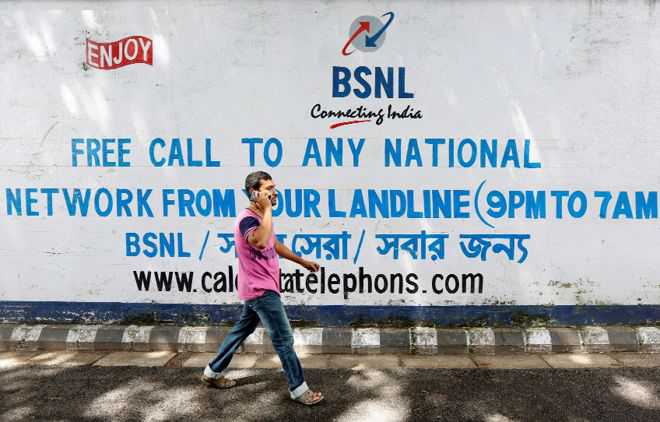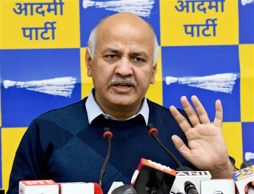
Strategic sector: There is great talent in the state-owned telecom sector, and should be used to run the new entity professionally.
Dinesh C Sharma
Science commentator
In the midst of the technological revolution in communication being witnessed all over, it is ironical that companies that provide telecom and broadband services in India are on the verge of becoming sick. Private telecom companies are looking for a bailout from the government in the wake of the SC judgment on the long-pending issue of adjusted gross revenue (AGR). If the SC directive is implemented, private telecom service providers will have to pay the Department of Telecom close to Rs 1.5 lakh crore in arrears, bringing them to the brink of bankruptcy. These companies already have massive debt running into several lakh crore of rupees.
At the other end of the spectrum are the state-owned telecom players, BSNL and Mahanagar Sanchar Nigam Limited (MTNL), facing mounting losses and having a combined debt of Rs 40,000 crore, which is relatively lower than the private companies, but still significant. The private operators, backed by powerful industry associations, are lobbying for options like moratorium on spectrum fee. On the other hand, public sector companies — left to stagnate since telecom liberalisation in the early 1990s — also have a glimmer of hope. After decades of benign neglect, the Centre has decided to back them in the form of a revival package. The plan is good, but needs to be executed cautiously.
The highlight of the plan is the merger of BSNL and MTNL, restructuring of their debt and making them capable of competing with private companies in terms of quality of services, given their vast network and infrastructure. The two companies will be allotted spectrum for 4G services. All necessary funds for the spectrum will be provided by the government. The companies will also be able to raise long-term bonds with sovereign guarantee provided by the Centre.
In addition, there will be a voluntary retirement scheme funded by budgetary support. The companies will also be allowed to monetise their assets, mainly land and buildings, to retire debt as well as fund expansion and upgrade networks. Given the leading position in the market BSNL once held, particularly in small towns and rural areas, the revival plan can play a critical role in providing quality broadband and data services in rural areas.
The first major step to modernise the century-old Posts and Telegraph (P&T) was taken way back in 1985, when the postal department and the archaic telegraph services were bifurcated, and the Department of Telecommunications (DoT) was carved out. The government also wanted to separate policy-making and regulation functions from service provision by setting up separate corporations to provide services. The idea was opposed by the deeply entrenched telecom bureaucracy and trade unions. Still, the Rajiv Gandhi government pushed through the idea of having a separate entity for providing services in Delhi and Mumbai, giving birth to MTNL.
The international communication was being handled by a separate wing called Overseas Communication Service (OCS). This, too, was converted into a new corporation in 1986 — Videsh Sanchar Nigam Limited (VSNL). Telephone services in the rest of the country still remained with DoT. It took another decade for BSNL to be born. The policy-making functions were moved to a new body called the Telecom Commission in 1989. On the technology side, the digital rural telecom exchange developed by the Centre for Development of Telematics (C-DOT) was a leap forward in modernising the network. All these steps helped transform colonial-era telegraph service into a new-age telecom establishment.
In this context, the decision to consolidate the two entities and develop a unified national telecom company is a great move, but the idea has to be executed with professional approach. The government should develop a clear roadmap for the merger and take all stakeholders on board. It should also make it clear that the intention of the exercise is not gradual privatisation, and certainly not short-term gains through selling of assets. The haphazard manner in which two profit-making and well-managed companies — VSNL and Computer Maintenance Corporation (CMC) — were sold off to the Tata group in the 1990s should serve as a grim reminder. Semiconductors Limited (SCL) was virtually abandoned by the Department of Electronics. It was the Department of Space which saw strategic value in it and continues to operate it.
The new telecom entity should also be guaranteed functional autonomy, and should not be milked by the parent ministry, as usually happens with PSUs. There is great talent available in the state-owned telecom sector and it should be utilised to run the new company. The board should consist of people who can guide the company and not those who are there just because they are occupying certain official positions in the government. The CEO and chairman of the merged entity should not be made to look to Sanchar Bhawan for recruiting new talent or procuring modern equipment and technology. The state-owned corporations have their inherent strengths and technical talent pool, which, in fact, has been poached by private players in the past three decades.
In today’s world, telecom is an essential national strategic sector in which no state can afford to lose interest. While the private sector has helped expand the services in profitable areas, it is the state sector which has helped provide services in rural and inaccessible regions.
In future, more and more government services will be delivered digitally or will depend on digital backbone. It is critical that this backbone is in the state sector. Along with the new service provider, the whole telecom ecosystem — research wings like C-DOT and public sector manufacturing units — needs to be nurtured. Overdependence on foreign technology and suppliers does not augur well for this strategic sector.



























